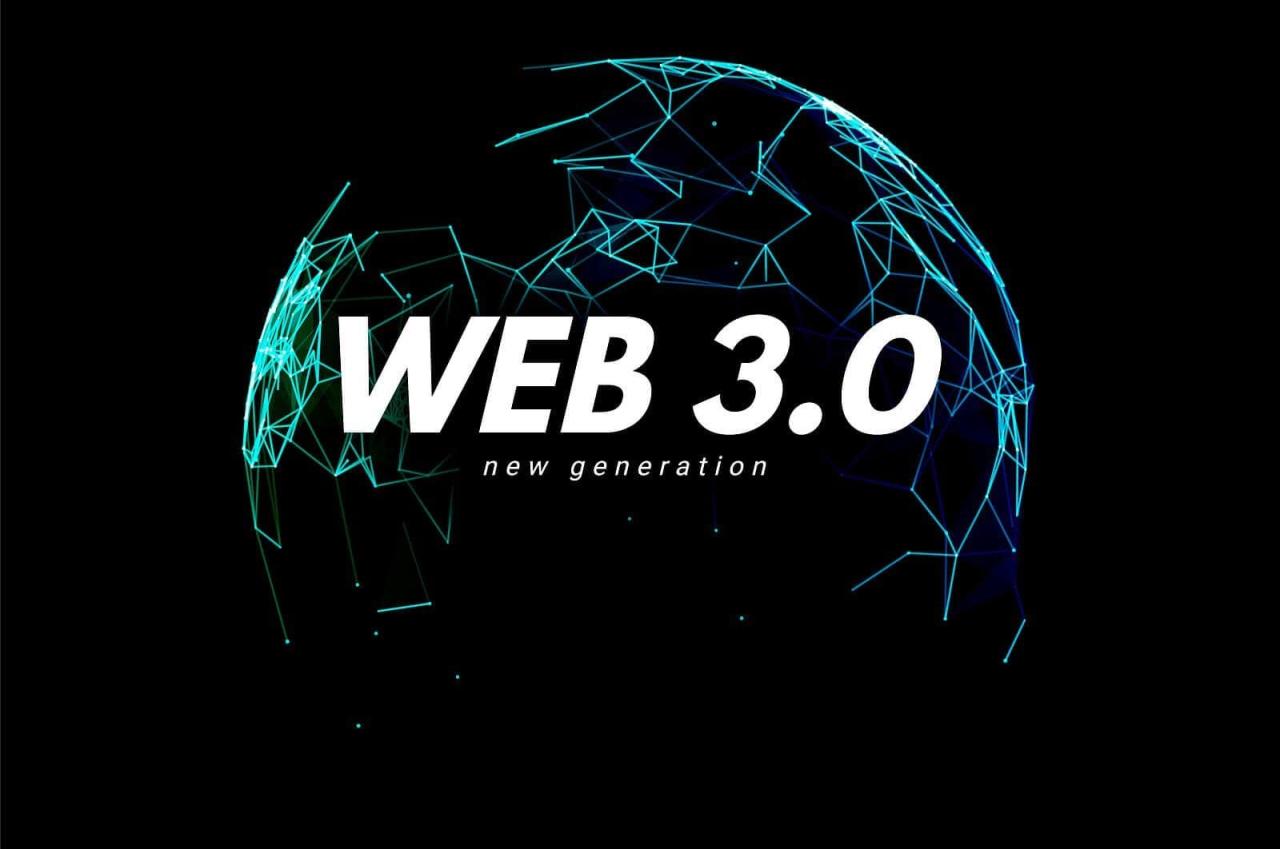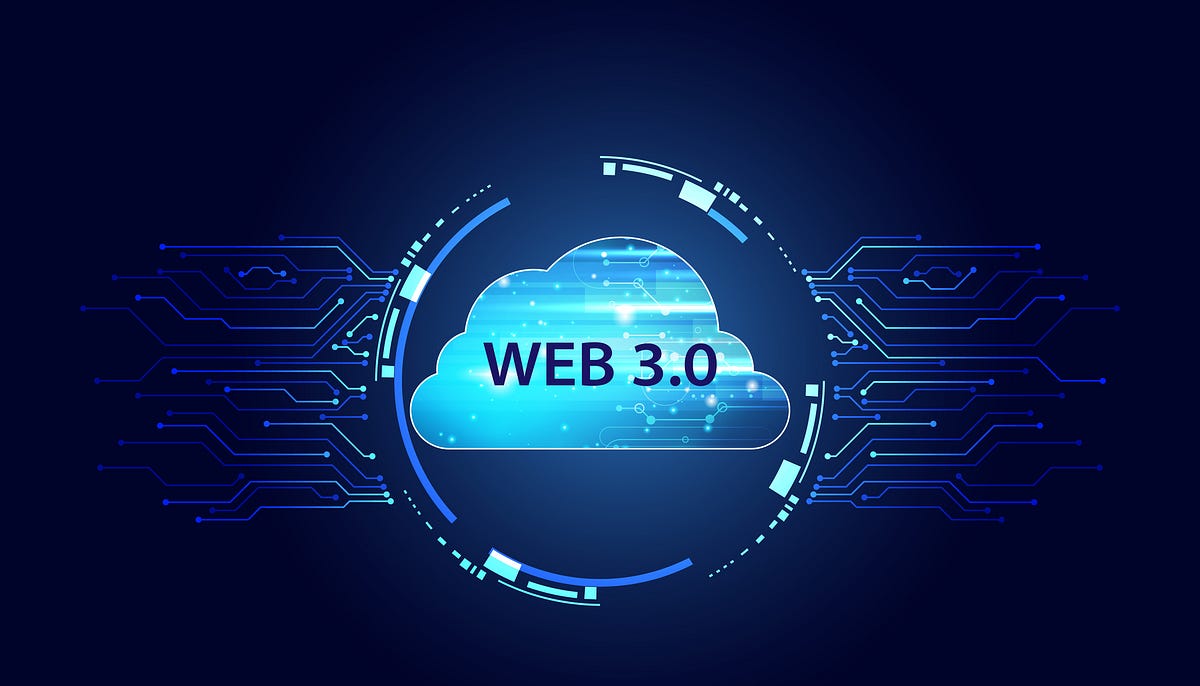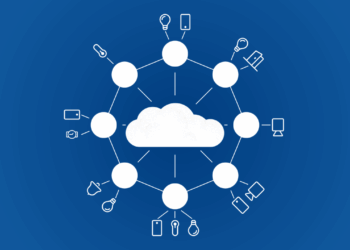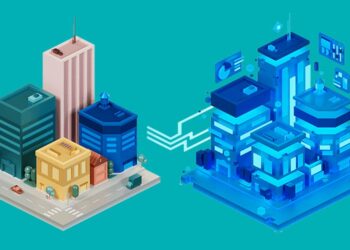The internet has fundamentally transformed our lives, evolving from a static collection of pages to the interactive, social platforms we know today. Yet, a new paradigm is emerging, promising to once again fundamentally redefine our digital landscape: Web3. Far more than just a technological upgrade, Web3 represents a philosophical shift – a move towards a decentralized, user-centric internet where control is redistributed from large corporations to individuals. Understanding this profound transition is key to grasping the future of online interaction, commerce, and identity. This extensive exploration will unpack the core tenets of Web3, its foundational technologies, its transformative potential across industries, and the critical challenges it faces on its path to mainstream adoption.
A Digital Evolution

To truly appreciate Web3, it’s essential to contextualize it within the internet’s historical progression.
A. Web1
The early internet, often called Web1 (roughly 1990s to early 2000s), was primarily a static, read-only experience.
- Static Content: Websites consisted mostly of static HTML pages.
- Information Consumption: Users consumed information, but interaction was minimal (e.g., email, basic forums).
- Decentralized Infrastructure (initially): While individual sites were centralized, the overall network was more distributed than Web2’s early days.
- Limited Interactivity: Think of it as a vast digital library.
B. Web2
Web2 (early 2000s to present) brought interactivity, social media, and user-generated content.
- User-Generated Content: Platforms like Facebook, Twitter, YouTube, and Wikipedia allowed users to create and share content.
- Social Interaction: Enabled global connectivity and community building.
- Centralized Platforms: While user-friendly, these platforms are typically owned and controlled by large corporations.
- Data Monetization: User data became a valuable commodity, leading to targeted advertising and privacy concerns.
- Platform Dependence: Users are subject to the rules, algorithms, and even censorship of these centralized entities.
C. Web3
Web3 aims to address the limitations of Web2, particularly its centralization and data control issues. It seeks to give power back to the users.
- Decentralization: Data and applications are not stored on single servers but distributed across many nodes in a network.
- User Ownership: Users own their data and digital assets (e.g., NFTs, cryptocurrency) directly, rather than platforms owning them.
- Interoperability: Digital assets and identities can seamlessly move across different applications and platforms.
- Permissionless: Anyone can participate without needing permission from a central authority.
- Trustless: Interactions can occur directly between parties without needing a trusted third-party intermediary.
- Native Payments: Cryptocurrencies are built into the fabric of Web3, enabling seamless transactions.
This shift from “read-only” to “read-write” to “read-write-own” represents a fundamental re-imagining of how we interact with the digital world and control our digital identities and assets.
The Foundational Pillars of Web3
Web3 is not a single technology but a stack of interconnected innovations working in concert.
A. Blockchain Technology
At the core of Web3 is blockchain technology. A blockchain is a distributed, immutable ledger that records transactions across a network of computers.
- Decentralized Database: Instead of a central server, copies of the ledger are maintained by many participants (nodes) on the network.
- Immutability: Once a transaction is recorded on the blockchain, it cannot be altered or deleted, ensuring transparency and integrity.
- Cryptographic Security: Transactions are secured using advanced cryptography, making them highly resistant to fraud.
- Consensus Mechanisms: Networks use mechanisms like Proof-of-Work (PoW) or Proof-of-Stake (PoS) to validate transactions and maintain the integrity of the chain.
- Smart Contracts: Programmable agreements that automatically execute when predefined conditions are met. These are foundational for decentralized applications (dApps).
Blockchains like Ethereum are particularly important for Web3 due to their robust smart contract capabilities, enabling a vast ecosystem of decentralized applications.
B. Cryptocurrencies and Digital Assets
Cryptocurrencies are the native tokens of blockchain networks and play a multifaceted role in Web3.
- Medium of Exchange: Facilitate transactions within dApps and across the Web3 ecosystem.
- Store of Value: For certain cryptocurrencies like Bitcoin, they act as a digital store of value.
- Utility Tokens: Many tokens provide access to services, features, or voting rights within specific Web3 projects.
- Non-Fungible Tokens (NFTs): Unique digital assets whose ownership is recorded on a blockchain. They represent ownership of digital art, collectibles, music, virtual land, and more, enabling digital scarcity and verifiable ownership.
- Digital Identity (Self-Sovereign Identity): Web3 aims to give users control over their digital identities, moving away from centralized login systems (like Google or Facebook) towards decentralized identifiers (DIDs) linked to their crypto wallets.
These digital assets are not just speculative investments; they are the economic backbone and the ownership layer of Web3.
C. Decentralized Applications (dApps)
Decentralized applications (dApps) are applications built on blockchain networks using smart contracts.
- Censorship-Resistant: Because they run on a decentralized network, dApps are much harder to shut down or censor by a single entity.
- Transparent: The code and transactions of dApps are often publicly auditable on the blockchain.
- Open Source: Many dApps are open-source, allowing for community contributions and scrutiny.
- User Control: Users often have more direct control over their data and interactions within dApps.
Examples range from decentralized finance (DeFi) protocols to NFT marketplaces, play-to-earn games, and decentralized social media platforms.
D. Interplanetary File System (IPFS) & Filecoin
For true decentralization, data storage also needs to move beyond centralized servers.
- IPFS: A peer-to-peer hypermedia protocol designed to make the web faster, safer, and more open. It allows users to store and access content in a distributed manner, rather than from a single server.
- Filecoin: A decentralized storage network built on IPFS, incentivizing users to store data for others. This provides a robust, censorship-resistant, and potentially more cost-effective alternative to traditional cloud storage.
E. Zero-Knowledge Proofs (ZKPs)
As blockchains are inherently transparent, Zero-Knowledge Proofs (ZKPs) are a crucial cryptographic technique enabling privacy in Web3.
- Proving Without Revealing: ZKPs allow one party to prove to another that a statement is true, without revealing any additional information beyond the validity of the statement itself.
- Enhanced Privacy: In Web3, ZKPs can enable private transactions on public blockchains, anonymous identity verification, or proving eligibility for a service without exposing sensitive personal data.
- Scalability Solutions: ZKPs are also being explored as a way to bundle and verify transactions off-chain (ZK-rollups), dramatically improving the scalability of blockchain networks.
Web3’s Transformative Potential Across Industries
The implications of Web3 extend far beyond just technical infrastructure, promising to disrupt and innovate across numerous sectors.
A. Decentralized Finance (DeFi)
Decentralized Finance (DeFi) is perhaps the most mature application of Web3, aiming to recreate traditional financial services in a trustless, permissionless, and transparent manner.
- Lending and Borrowing: Platforms like Aave and Compound allow users to lend and borrow crypto assets without traditional intermediaries.
- Decentralized Exchanges (DEXs): Uniswap and SushiSwap enable peer-to-peer cryptocurrency trading directly from user wallets, without central custodians.
- Stablecoins: Cryptocurrencies pegged to stable assets like the US dollar, mitigating crypto volatility for transactions.
- Yield Farming and Staking: Users can earn returns on their crypto assets by providing liquidity or participating in network validation.
- Insurance: Decentralized insurance protocols offer protection against smart contract bugs or other risks.
DeFi offers greater financial inclusion, lower fees, and censorship resistance, but also carries higher risks due to smart contract vulnerabilities and market volatility.
B. Gaming
Web3 is revolutionizing the gaming industry by introducing true digital ownership and new economic models.
- Play-to-Earn (P2E): Games like Axie Infinity allow players to earn real value (cryptocurrency or NFTs) by playing, trading in-game assets, or contributing to the game’s ecosystem.
- NFTs for In-Game Assets: Players genuinely own their in-game items (skins, weapons, characters) as NFTs, which can be traded, sold, or used across different games (if interoperable).
- Decentralized Autonomous Organizations (DAOs) in Gaming: Players can have a say in the development and governance of games through DAOs, shifting power from developers to the community.
- Interoperable Metaverses: The vision of digital assets and identities seamlessly moving between different virtual worlds.
C. Social Media
Web3 aims to address the censorship, data privacy, and monetization issues prevalent in Web2 social media.
- Decentralized Social Networks: Platforms like Lens Protocol and Farcaster allow users to own their social graphs and content, enabling portability across different front-ends.
- Creator Monetization: Direct monetization models where creators capture more of the value they generate, without significant platform fees.
- Censorship Resistance: User content is stored on decentralized networks, making it harder for central authorities to remove.
- Data Ownership: Users control their own data and choose who can access it.
D. Identity Management
Web3 promotes a paradigm shift in how we manage our digital identities.
- Decentralized Identifiers (DIDs): Unique, cryptographically verifiable identifiers that users control.
- Verifiable Credentials (VCs): Digital credentials (e.g., driver’s license, university degree) that can be issued, stored, and presented by users without relying on a central authority.
- Privacy-Preserving Authentication: Users can authenticate themselves and prove certain attributes without revealing excessive personal information.
This promises a future where users have ultimate control over their personal data and how it is used online.
E. Arts and Entertainment
NFTs have already significantly impacted the arts and entertainment industries.
- Digital Art Ownership: Artists can sell unique digital art pieces as NFTs, ensuring verifiable ownership and provenance.
- Direct Fan Engagement: Musicians and creators can issue NFTs for exclusive content, merchandise, or fan experiences, fostering direct connections and new revenue streams.
- Fractional Ownership: Large or expensive NFTs can be tokenized, allowing multiple people to own a fraction of an asset.
- Creator Royalties: Smart contracts can ensure that artists receive a percentage of future sales of their work, creating perpetual income streams.
F. Supply Chain and Logistics
Blockchain, a core Web3 technology, offers significant advantages for supply chain management.
- Enhanced Transparency: Every step of a product’s journey, from raw materials to final delivery, can be recorded on an immutable blockchain, providing end-to-end visibility.
- Improved Traceability: Easily track goods, verify their authenticity, and identify sources of contamination or defects.
- Reduced Fraud: Counterfeit goods can be combated by verifying product origins on the blockchain.
- Automated Payments: Smart contracts can automatically trigger payments upon delivery or verification of goods.
Key Challenges and Obstacles for Web3

Despite its immense promise, Web3 faces significant hurdles on its path to widespread adoption.
A. Scalability and Speed
Current blockchain networks, particularly Ethereum (before full Eth2/Serenity upgrade), struggle with scalability.
- Transaction Throughput: They can only process a limited number of transactions per second compared to traditional systems like Visa.
- High Transaction Fees (Gas Fees): Network congestion can lead to prohibitively high fees, making micro-transactions impractical.
- Solutions Under Development: Layer-2 scaling solutions (e.g., rollups like Arbitrum, Optimism, ZK-rollups) and alternative Layer-1 blockchains (e.g., Solana, Avalanche) are being developed to address these issues.
B. User Experience (UX)
Web3 applications are often complex and intimidating for the average user.
- Steep Learning Curve: Concepts like crypto wallets, seed phrases, gas fees, and smart contracts are foreign to most.
- Security Risks: Users are solely responsible for securing their private keys; loss means permanent loss of assets. Phishing scams and smart contract exploits are common.
- Lack of Familiarity: Interfaces often lack the polished simplicity of Web2 applications.
- Solutions: Focus on intuitive wallet interfaces, simplified onboarding processes, and abstracting away blockchain complexities for users.
C. Regulation and Compliance
The decentralized, borderless nature of Web3 poses significant challenges for regulators.
- Legal Uncertainty: The legal status of cryptocurrencies, NFTs, DAOs, and DeFi protocols varies widely across jurisdictions and is often unclear.
- Consumer Protection: Regulators are concerned about protecting consumers from fraud, market manipulation, and the inherent volatility of crypto assets.
- Anti-Money Laundering (AML) and Know Your Customer (KYC): Balancing the need for privacy with regulatory requirements to prevent illicit activities.
- Taxation: Determining how to tax crypto assets and transactions is a complex and evolving area.
D. Centralization Tendencies
While Web3 champions decentralization, there are inherent centralizing forces.
- Infrastructure Providers: Reliance on centralized cloud providers (e.g., Amazon Web Services) for running nodes or dApp front-ends.
- Wallet Providers: While users own their keys, some widely used wallets (e.g., MetaMask) have centralized components.
- Concentration of Power: A small number of large token holders or development teams can exert significant influence over DAOs and protocols.
- Blockchain Development Teams: The core development of major blockchains is often driven by a relatively small group.
E. Environmental Impact
The energy consumption of Proof-of-Work (PoW) blockchains like Bitcoin (and historically Ethereum) has been a significant concern.
- Energy-Intensive Mining: PoW requires massive computational power, leading to high energy usage.
- Solutions: The shift to Proof-of-Stake (PoS) (e.g., Ethereum’s “Merge”) drastically reduces energy consumption. Development of energy-efficient consensus mechanisms is ongoing.
F. Security Vulnerabilities
Despite cryptographic strength, Web3 projects are vulnerable to various security risks.
- Smart Contract Bugs: Flaws in smart contract code can lead to massive losses (e.g., DAO hack, countless DeFi exploits).
- Phishing and Social Engineering: Users can be tricked into revealing private keys or signing malicious transactions.
- Centralized Points of Failure: Bridges connecting different blockchains are often targets for sophisticated attacks.
- Solutions: Rigorous code audits, bug bounties, and increasing user education on security best practices.
Mainstream Adoption and Future Vision
Despite the challenges, the momentum behind Web3 is undeniable. Its trajectory will be shaped by ongoing innovation, regulatory clarity, and user-centric development.
A. Bridging the Gap to Mainstream
For Web3 to achieve widespread adoption, several key areas need focus:
- Improved UX: Making Web3 as easy to use as Web2 applications, abstracting away underlying complexities.
- Education and Awareness: Informing the public about the benefits and risks of Web3 in an accessible way.
- Developer Tools: Creating more robust and user-friendly tools for developers to build decentralized applications.
- Interoperability Standards: Developing standards that allow different blockchains and dApps to communicate seamlessly.
- Hybrid Models: Exploring solutions that combine the best aspects of Web2 (scalability, familiarity) with Web3 (decentralization, ownership).
B. The Metaverse and Web3’s Role
The concept of the Metaverse – persistent, shared virtual worlds – is deeply intertwined with Web3.
- Digital Ownership: NFTs will serve as the basis for owning virtual land, avatars, wearables, and other in-game assets within the Metaverse.
- Decentralized Economies: Cryptocurrencies will be the native currencies of Metaverse economies, enabling seamless transactions.
- Interoperable Identities: Web3 identities will allow users to carry their digital personas and assets across different Metaverse platforms.
- User-Generated Content: Users will have greater ownership and monetization rights over content they create within the Metaverse.
C. Decentralized Autonomous Organizations (DAOs)
DAOs are a powerful organizational structure native to Web3.
- Community Governance: Members collectively own and govern a project, making decisions through token-based voting.
- Transparency: All proposals and votes are recorded on the blockchain.
- Flat Hierarchies: A move away from traditional corporate structures.
- Future Potential: DAOs could redefine how companies, communities, and even nations are governed.
D. Public and Private Sector Adoption
Beyond the crypto native community, traditional enterprises and governments are increasingly exploring Web3 technologies.
- Enterprise Blockchains: Large companies are using private or consortium blockchains for supply chain management, data sharing, and identity verification.
- Central Bank Digital Currencies (CBDCs): Governments are exploring digital versions of their national currencies, often leveraging blockchain-like technology.
- Tokenization of Real-World Assets: Bringing real-world assets (e.g., real estate, art, commodities) onto the blockchain as digital tokens, enabling fractional ownership and increased liquidity.
Conclusion
Web3 represents a monumental shift towards a more open, equitable, and user-centric internet. By leveraging blockchain, cryptocurrencies, and decentralized applications, it promises to empower individuals, foster true digital ownership, and unlock unprecedented levels of innovation. While significant challenges related to scalability, user experience, and regulation persist, the underlying principles of decentralization and user empowerment are compelling. As the technology matures and becomes more accessible, Web3 has the potential to fundamentally redefine our digital interactions, giving us greater control over our data, identity, and assets online. The journey is complex, but the destination—a truly user-owned internet—is a future worth building.









